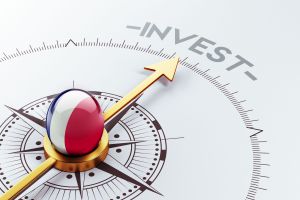OP-ED: KĀPĒC PASAULEI JĀSEKOT ĶĪNAI UN INVESTĪNAFRIKAI262382173NĀKOTNE
HendrikduToit, co-CEO of Investec Group argues African economies have been resilient and the continent’s long-term growth story – particularly green growth – remains compelling to invest in Africa.
By Hendrik du Toit is co-CEO of Investec Group
I remember a time, beidzies 20 years ago now, kad praktiski neviens profesionāli pārvaldīts kapitāls nav pārvietots pāri robežām Āfrikā. When aid and corruption drove the investment narrative. When Africa was called the “bezcerīgs kontinentsE2809D. When sustainability wasn’t even part of an investor’s vocabulary. We’ve come a long way.
The millennium heralded rapid growth across the African continent. At around 3%, Āfrikas infrastruktūras noklusējuma rādītāji ir zemākie pasaulē. Africa has the fastest growing population and is seeing a wave of innovation and entrepreneurship sweeping across the continent. The latter is strongly enabled by mobile phone technology which has directly facilitated a financing revolution. Saules paneļu uzstādīšana ārpus tīkla ir palielinājusies, iegādāts ar ikmēneša maksājumiem, kas veikti mobilajos tālruņos, through companies like Mobisol and M-Kopa.
Protams, globālie un vietējie notikumi, ieskaitot 2014 naftas cenu satricinājums, jo īpaši smaga ekonomika; weE28099 paredzēja nesen veiktspējas samazināšanosAngolā, Nigērija, and my home country of South Africa. But overall, African economies have been resilient and the continent’s long-term growth story – particularly green growth – remains compelling.
Miljardi dolāru ir ieguldīti atjaunojamā enerģijā visā kontinentā. Pēdējā gada laikā, Nigērija izdotaN10,69 miljardus (2429 miljoni ASV dolāru) zaļā saite to fund local solar and forestry projects. This is Africa’s first sovereign green bond – one of only a handful in the world (līdzās Ķīnai, Francija, Polija, Fidži un Indonēzija). Kenya will soon follow.
The Pasaules Banka also estimates that aggregate growth in Sub-Saharan Africa for 2018 būs apkārt 3.2%, no augšas 2.4% pagājušais gads. The continent is expected to host six of the 10-fastest growing economies of the world in 2018, kamēr tiek pārvaldīti tradicionālie aktīvi (ieskaitot pensiju un kopfondu) are forecast to grow to around US$1.1 trillion by 2020, up from US$634billion in 2014.
Īsumā, Āfrika ir ļoti lielaE2809KopeneuzņēmējdarbībaiE2809D, particularly for investors who are chasing yield and diversification. China’s got the message, committing to US$60 billion in new investment in major capital projects across Africa. Indeed, Ķīna ir bijusi neatņemama Āfrikas daļa, tā lielākais importa avots un pēdējā laikā lielākais kapitāla avots, gan pašu kapitāls, gan parāds.
Tie ir pozitīvi signāli, but a lot more capital is still needed, īpaši no lielām institucionālajiem investoriem. Estimates put the Āfrikas infrastruktūras deficīts ir aptuveni 2490 miljardi ASV dolāru every year for the next decade. Across the continent, 620 miljoniem cilvēku joprojām izmanto E28099ar elektroenerģiju; 319 miljoniem cilvēku dzīvo bez piekļuves dzeramajam ūdenim; un tikai 34% ir piekļuve ceļam.
Ir dažas lietas, kas var palīdzēt. Pirmkārt, E2809CsajaukšanaE2809Dpubliskais un privātais kapitāls var uzlabot līdzekļusE28099riska atdeves profils, so vehicles which use development money to mitigate investor risks can attract much needed commercial investment. Some of these vehicles – like Valūtas maiņa, which offers FX hedging in emerging markets – have successfully mobilised billions of dollars of private money for African projects.
Another example is the Jaunās Āfrikas infrastruktūras fonds (EAIF) with projects ranging from water supply in Rwanda to solar power in Uganda. The EAIF is part of the Private Infrastructure Development Group (ar pašu kapitālu no valdībām, tostarp Apvienotajā Karalistē, Zviedrija, Vācija un Nīderlande) and recently announced that it had piesaistīja savu pirmo komerciālo aizdevēju globālajā apdrošināšanā Allianz, as part of a $385 million fund-raising round. This investment signals a shift in appetite for African risk from institutional investors. These vehicles need to be scaled and replicated.
Otrkārt, to attract investment for high-impact assets like climate-resilient, sustainable infrastructure, development banks need to be more effective at crowding iekšā private capital using instruments like political risk insurance and guarantees, not crowding them ārā. Labākajā gadījumā, uz daudzpusējas attīstības bankas (MDB) mobilitāte nekā $1 of private capital for every public dollar across their portfolios. They should target much higher mobilisation ratios and sharply increase their share of private sector activities (which currently only account for around 30% of MDB activities).
Thirdly, frontier countries must compete for investor dollars by making it easier for the private sector to do business. This requires strong, political leadership, depth in local capital markets, the right legal framework and transparent policies. In particular, local policies should support regional simplicity to facilitate cross-border operations that can generate scale. Piemēram, a very important, but much-overlooked regulatory amendment recently saw the amount that South African retirement funds could invest into the rest of Africa increase from 5% uz 10%. It’s only when public markets are deep enough for strong exits that we’ll see bigger and bigger deals happening.
Most importantly, if we really want to see sustainable growth and the associated economic and financial returns, the investment community needs to lead. We need to take a leaf out of China’s book, embracing African infrastructure as an investment opportunity, taking advantage of risk mitigation tools and addressing the huge gap in risk perception between emerging and developed markets. We can also use our investing power to drive value for shareholders while prioritising “green”, sustainable development (e.g. through initiatives like Climate Action 100+).
This is all part of how we move away from an “aid-based” narrative to one of business and investment. It is also how we can provide the platform for economic inclusion of the world’s most youthful and fastest growing labour force. I dream of a future shaped by bold and wise investment decisions.
AVOTS: CNBCAfrica

